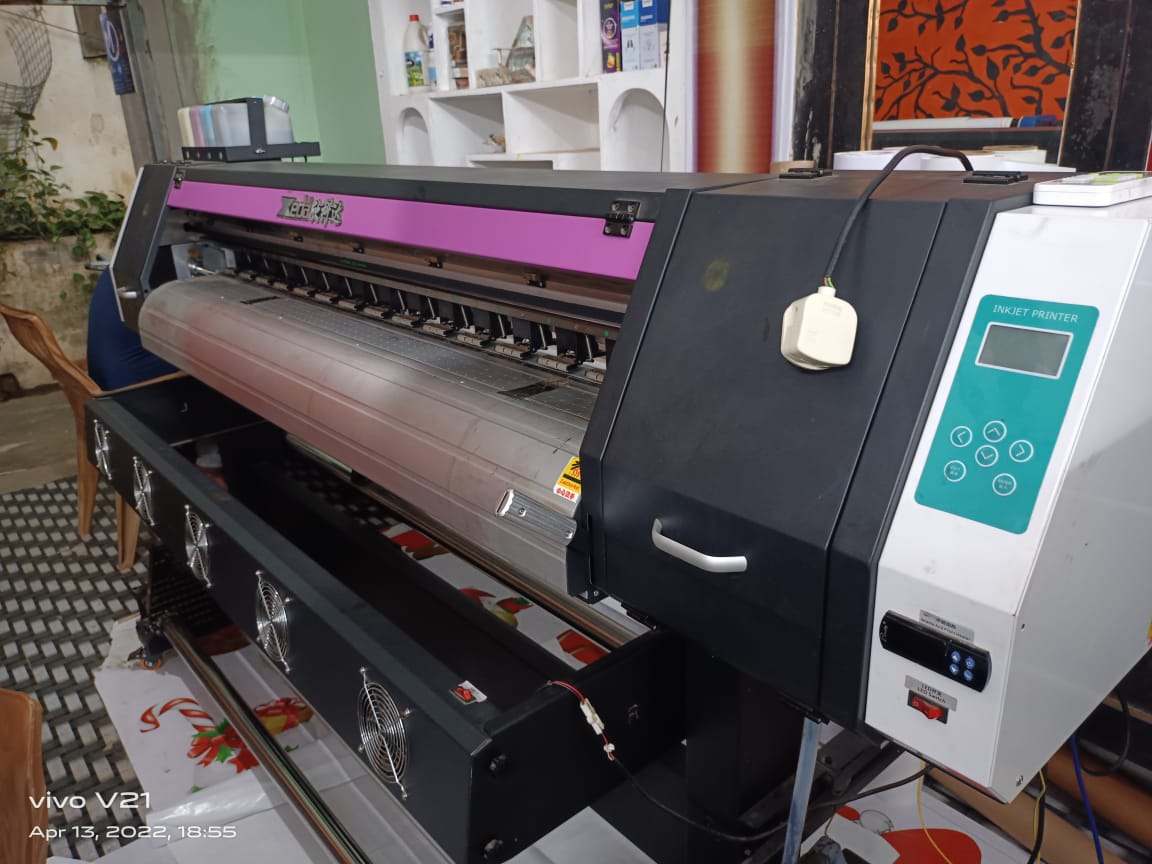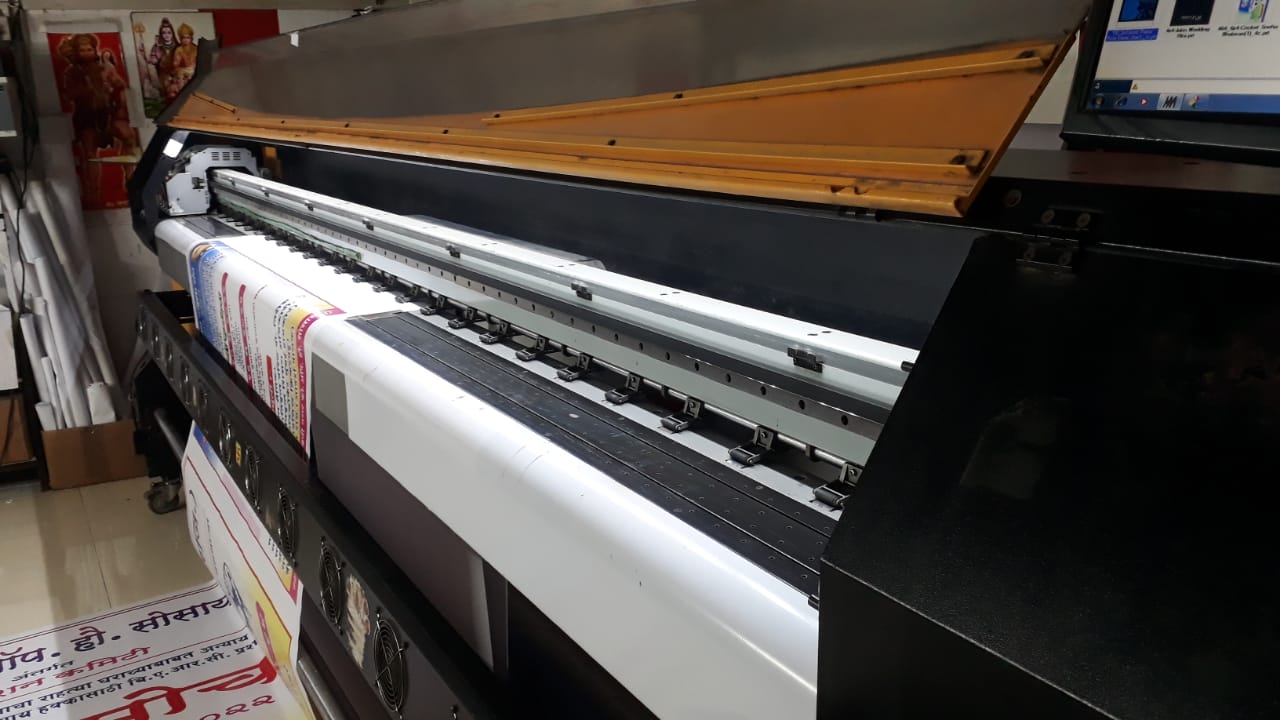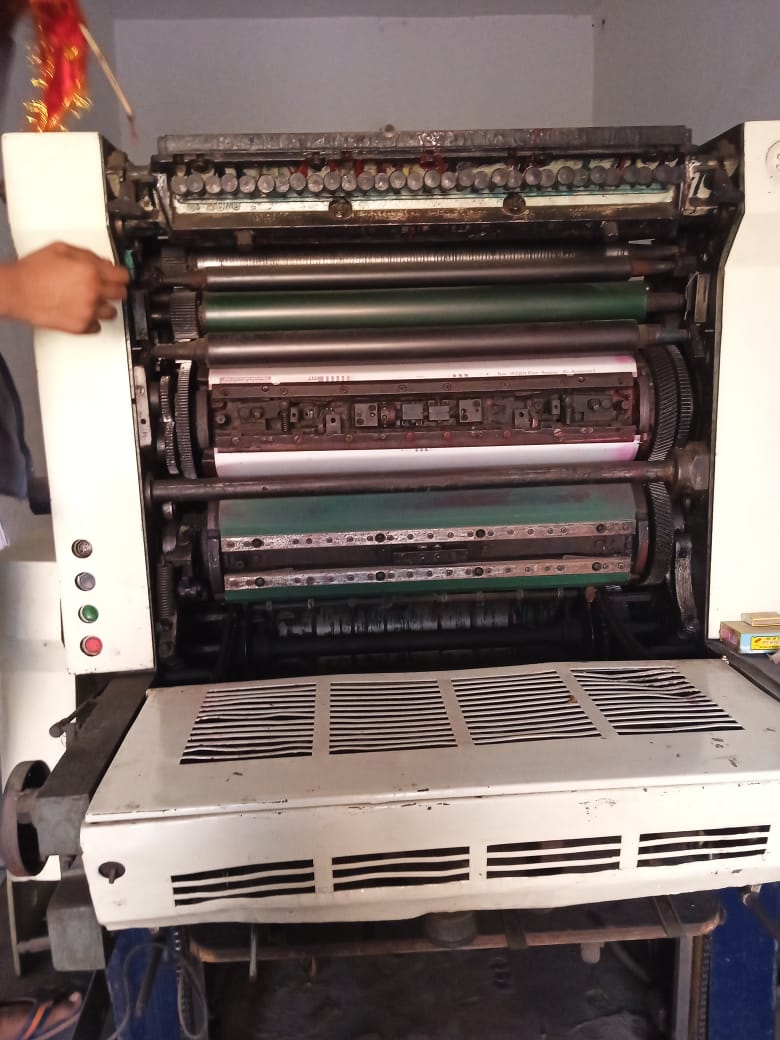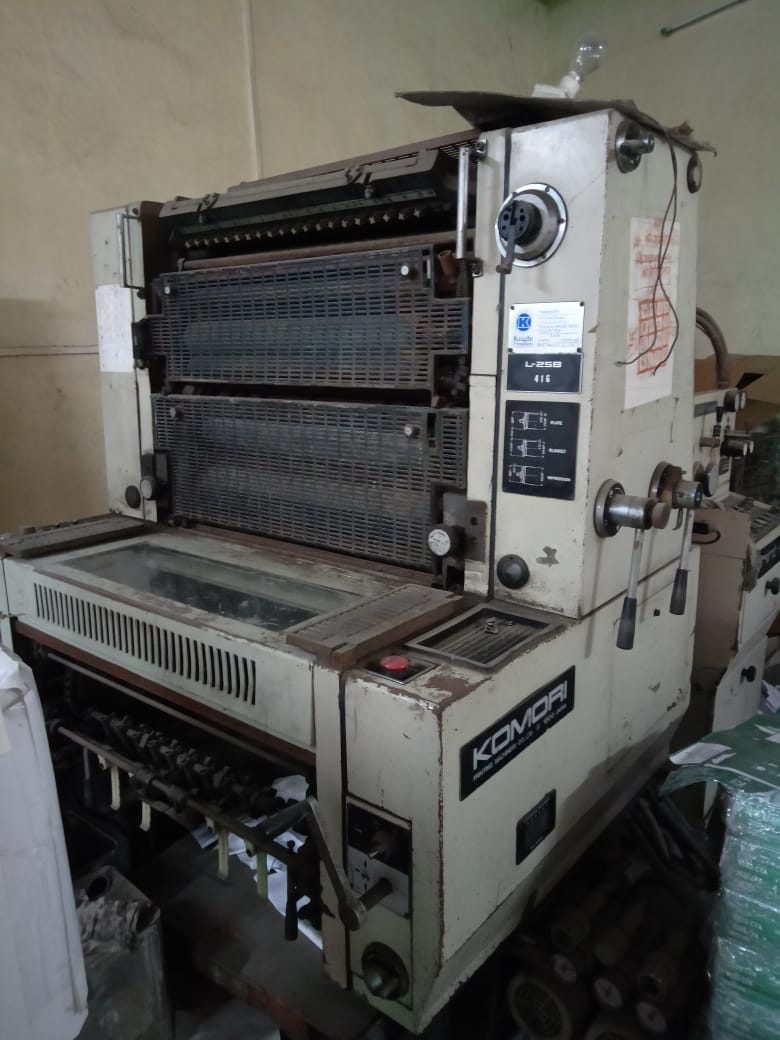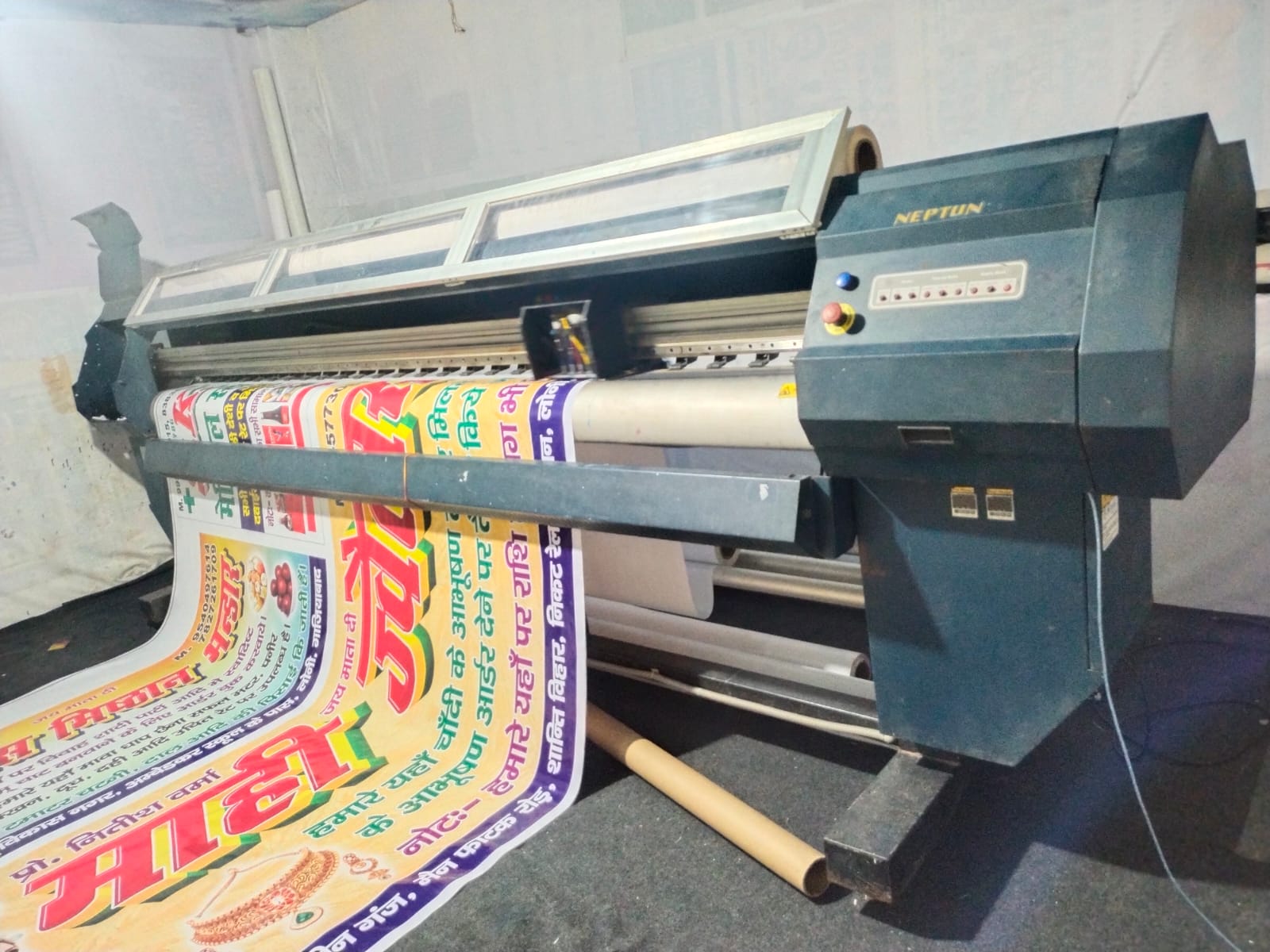This is a Book Printing Machine
Product Specification
| Usage/Application | Textbook, Book printing |
| Automation Grade | Automatic |
| Installation Service | Yes |
| Color Printing | Yes |
| Country of Origin | Made in India |
| Brand | Prakash |
A book printing machine, also known as a book printing press, is a specialized machine used for printing and binding books in large quantities. These machines are commonly used in the printing industry, publishing houses, and book manufacturing facilities.
Book printing machines encompass various components and processes to produce finished books. Here are the key components and processes involved:
- Prepress: This stage involves preparing the digital files for printing. It includes tasks such as typesetting, layout design, color correction, image processing, and imposition, which arranges the pages in the correct order for printing.
- Printing Press: The printing press is the core component of a book printing machine. There are several types of printing presses used for book printing, including:a. Offset Printing Press: Offset printing is a widely used method for book printing. It involves transferring inked images from a printing plate to a rubber blanket, which then transfers the ink onto the paper. Offset printing provides high-quality and consistent results, making it suitable for large print runs.
b. Digital Printing Press: Digital printing machines use digital technology to print directly from electronic files. They offer fast turnaround times, variable data printing capabilities, and are suitable for short to medium print runs. Digital printing is ideal for on-demand printing, personalized books, and smaller quantities.
- Binding: Once the book pages are printed, the binding process takes place to join the pages together and create a finished book. Common binding methods include:a. Perfect Binding: This method involves applying adhesive to the spine of the book block and attaching a cover. Perfect binding is commonly used for softcover books.
b. Sewn Binding: Sewn binding involves sewing the signatures (folded printed sheets) together using thread. This method provides durability and is often used for hardcover books or high-quality publications.
c. Saddle Stitching: Saddle stitching is used for books with fewer pages. It involves stapling the pages together along the fold line.
d. Case Binding: Case binding is used for hardcover books. It involves attaching the book block to a hardcover casing, which is then covered with a printed or decorative material.
- Finishing: After the binding process, various finishing techniques may be applied to the books, such as trimming the edges, adding cover lamination or varnish, embossing or debossing, foil stamping, and applying other decorative elements.
The specific features and capabilities of a book printing machine can vary depending on the manufacturer and model. Some advanced machines may offer additional functionalities such as inline color control systems, automated plate changing, integrated folding and cutting options, and computerized controls for efficient and precise book production.
It is in a good working condition.
No pending loan against the machine.
It has been Recently serviced.



